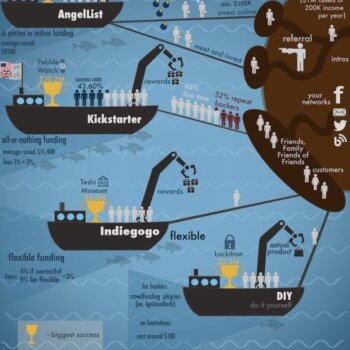Did you create a masterpiece?
That was the analogy my first sales manager Clarke, used to describe a sales process. Clarke was old school and had seen many eager 20-year-olds like me over the course of his career. He looked at the interaction between a salesperson, their customer and the exchange of information between both parties as an art form akin to sculpture or painting. His deft use of different sales techniques, questions, deep insight into character, and authenticity made him seem larger than life.
I grew up in a family of physicists and engineers. Art quite frankly wasn’t something that we really talked about, creativity even less so. We looked for the numbers and science to tell the story. Order and measurability ruled supreme, ambiguity was banished to the basement. So I came to sales firmly planted in the scientific method of selling. Everyone knows it’s a numbers game. Figure out the math and you can build a money machine.
It was after my first few sales that I realized numbers only told part of the story. It was the sales reps who creatively modified the sales system that were best at manipulating the numbers to their advantage and thus, received an unfair share of the sales, commission, and glory.
Sales reps who didn’t practice repeatability, and operated exclusively with creativity were only effective in a very small set of circumstances. Sales reps who relied solely on the system rarely succeeded either. The magic was in the balance.
I have discovered that creativity in sales needs to be grounded in experience through experimentation. As I have built up sales teams and organizations delivering close to $100M in run rate sales annually, I have guided sales teams using my 3 rules around creativity:
1. If you don’t have a system, you work for your sales team. It’s not the other way around.
Business leaders can’t afford not to have a sales system. Using your creativity to build that system is key to ensuring that you as the owner has options if your salesperson leaves. Your first task is to discover a sales system that matches the type of sales culture you want to build. Recognize that the system is like a stencil, it draws the outline of your masterpiece. If you leave it stock, you don’t have your masterpiece. Take the time to experiment with your selected system and modify it using A/B testing. Try different stages tied to your customer’s buying process. In the highest converting systems there is almost no gap between how the system is used and how customers buy. A great sales system balances the power between salesperson, company, and customer. It should align everyone’s interests together like a powerful magnet!
2. Be creative on content and consistent on engagement.
Not all forms of creativity in the sales process are the same. Frankly, once you have figured out your system and proven that it works and is predictable, changing it without justification is reckless. In the same way, if you repeatedly use the same content, you’ll bore your customers and fail. As the half-life on information grows shorter, content becomes more difficult than ever to keep relevant. On the bright side, this gives your sales people the opportunity to be creative by bringing their unique style to customer interactions. Have your sales reps build templates that can be customized for initial outreach, follow up, keep in touch campaigns, meeting requests, etc. This is a great way to provide the skeleton of structure around what can be a highly customized and creative conversation with clients. LinkedIn, Facebook and Twitter provide rich sources of content that can be creatively utilized to create meaningful and relevant interactions with prospects during the sales process. The more personal and connected a customer is to the content, the more likely they will convert.
3. Be provocative, not alienating.
The great artists challenge their audience’s boundaries by striding the line between provocation and alienation. To manage this balance is high art indeed! Many reps are unable to do this and run afoul of customer perceptions, brand guidelines, and compliance officers. Fostering apprenticeship on your team is a big part of getting this right. Before you send that provocative email to have someone else who is a master in your organization look at it, discuss it with you, understand what you are trying to provoke. Is it a meeting? An order? A referral?
I once emailed a prospect to let them know that I had been asked to “remove them” from my pipeline and that I would be deleting them from my CRM if I didn’t hear from them in 24 hours. Just 2 minutes later, I received a call and got the real deal on why my app had stalled. I now use that little bit of creativity on every deal that stalls. The prospects who never got back to me were removed from my CRM. The vast majority who did get back to me gave me an update. Now, I can choose to disengage and reengage at the right time. We are drowned with communication. Provocation is one of the ways we can creatively get above the noise.
Leveraging creativity in the sales process is a differentiator that separates the top 1% from the rest of sales producers. Creativity allows us to express our unique gifts in our work and gives us great satisfaction when our work is viewed by our customers and colleagues as a masterpiece.
_______________________
About the Author
This article was written by Dinesh Kandanchatha, a founder, mentor, speaker, and entrepreneur. Dinesh has grown, led, and exited 13 companies, scaled revenues to 8 figures, and sold a company for over $200 million.






























